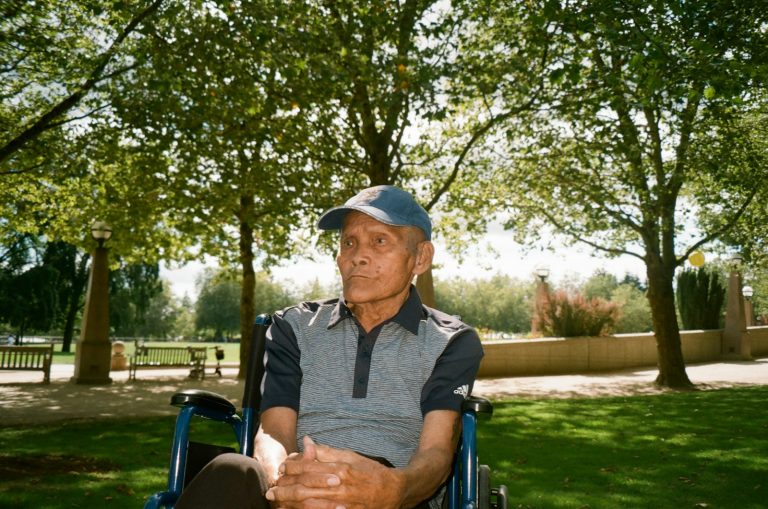Maintaining mobility can be a challenge for the elderly, especially in today’s fast paced world, yet, it’s crucial for their quality of life and mental well-being. This post explores various at-home mobility solutions designed to help seniors stay active and independent.
The Importance of Independence for Mental Health
Why Independence Matters
Independence is not just a physical state; it’s a psychological one as well. For many seniors, the ability to perform daily tasks without assistance is a matter of dignity and self-worth, and when elderly individuals can maintain some level of independence, it significantly boosts their mental health.
Mental Health Benefits
Maintaining independence can reduce feelings of depression and anxiety. Older adults who can manage their own lives tend to have higher self-esteem and a more positive outlook on life. This aspect of mental health is often overlooked but is as essential as physical health for overall well-being.
Empowering the Elderly
Empowering seniors to take control of their lives can make a significant difference. Simple acts like choosing their meals or deciding when to go for a walk can uplift their spirits. Mobility solutions play a vital role in this empowerment, providing the necessary support to keep them active and engaged.
Common Mobility Challenges Faced at Home
Physical Limitations
As we age, physical limitations become more apparent. Issues such as arthritis, muscle weakness, and balance problems can make even simple tasks challenging. These limitations often lead to a reduced quality of life.
Environmental Barriers
Homes not designed with limited mobility in mind can pose several challenges. Stairs, narrow hallways, and slippery floors are common obstacles that can make moving around difficult and dangerous for seniors.
Psychological Barriers
Fear of falling or getting injured can deter seniors from being active. This fear can be more debilitating than physical limitations, keeping them confined to their homes and leading to social isolation.
The Role of Technology in Enhancing Mobility
Advanced Mobility Aids
Technology has come a long way in improving mobility aids. Modern wheelchairs, rollator walkers, and mobility scooters are more versatile and user-friendly. Features like adjustable heights, lightweight materials, and ergonomic designs make these aids more effective and comfortable.
Smart Home Devices
Smart home devices can significantly enhance the mobility and safety of elderly individuals. Voice-activated assistants, automated lighting, and smart locks can make daily tasks easier and safer, reducing the need for constant supervision.
Wearable Technology
Wearable devices like fitness trackers and fall detection systems can provide real-time data about a senior’s health and mobility. These devices can alert caregivers in case of an emergency, providing peace of mind for both the elderly and their families.
Mobility Solutions for Different Needs
Walkers and Rollators
A walking stick or rollator with seat can be excellent for those who need a little extra support but still want to maintain an active lifestyle. These can come in various designs, such as folding walking sticks or rollators with storage compartments, making them versatile for different needs.
Wheelchairs and Scooters
For seniors with more severe mobility issues, wheelchairs and scooters are indispensable. Modern designs offer features like reclining seats, headrests, and even portable options for easy transportation.
Stair Lifts and Ramps
Stairs are often a significant barrier for elderly individuals. Stair lifts and ramps can make multi-story homes more accessible, allowing seniors to move freely between floors without the risk of falling.
Home Modifications for Enhanced Mobility
Installing Grab Bars
Grab bars are simple yet highly effective tools for enhancing mobility. Placing them in strategic locations like bathrooms and hallways can provide the necessary support to prevent falls.
Non-Slip Flooring
Slippery floors are a common hazard for the elderly. Replacing them with non-slip alternatives or adding non-slip mats can make a home much safer and easier to navigate.
Wider Doorways and Hallways
Widening doorways and hallways can make a home more accessible for wheelchairs and walkers. This modification is particularly useful for those with severe mobility issues, providing ample space for movement.
Community Support and Resources
Local Support Groups
Joining a local support group can provide emotional and practical support. These groups often share valuable information about mobility solutions and resources available in your community.
Online Communities
Online forums and social media groups offer a platform to connect with others facing similar challenges. These communities can be a source of support, advice, and inspiration.
Educational Workshops
Many communities offer workshops focused on mobility and ageing. These workshops can provide valuable information and hands-on training for both seniors and caregivers.
Conclusion
Enhancing quality of life with at-home mobility solutions is not just about adding gadgets and making modifications. It’s about empowering the elderly to live independently and with dignity. From advanced technology to simple home modifications, there are numerous ways to improve mobility and, in turn, mental health.
For those looking to take the next step in improving mobility at home, consider consulting a mobility expert or occupational therapist. By investing in the right mobility solutions, you can transform not just a home, but a life. Start today and take the first step towards a more independent and fulfilling life for you or your loved ones.


0 Comments